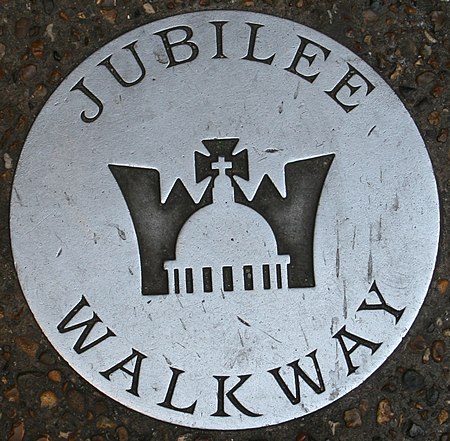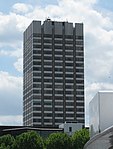Jubilee Walkway

The Jubilee Walkway is an official walking route in London. It was originally opened as the Silver Jubilee Walkway to commemorate Queen Elizabeth II's accession; the Queen herself opened it on 9 June 1977 during her silver jubilee celebrations. The intention was to connect many of London's major tourist attractions and it is now one of seven such walks within the Mayor of London's strategic walking routes. Its length is 15 miles. The Jubilee Walkway Trust was set up in 1978 to look after the trail, in collaboration with local authorities. On 24 October 2002, during the Queen's golden jubilee, the renamed Jubilee Walkway (the word Silver was dropped as appropriate) reopened after refurbishment and a new spur walk was opened in 2003, called the Camden loop, which took walkers into north-west London. The Jubilee Walkway can be divided into five smaller loop walks: the Western loop, Eastern loop, City loop, Camden loop and Jubilee loop.
Excerpt from the Wikipedia article Jubilee Walkway (License: CC BY-SA 3.0, Authors, Images).Jubilee Walkway
The Queen's Walk, London Lambeth (London Borough of Lambeth)
Geographical coordinates (GPS) Address Nearby Places Show on map
Geographical coordinates (GPS)
| Latitude | Longitude |
|---|---|
| N 51.5082 ° | E -0.1126 ° |
Address
Jubilee Walkway
The Queen's Walk
SE1 8XT London, Lambeth (London Borough of Lambeth)
England, United Kingdom
Open on Google Maps










